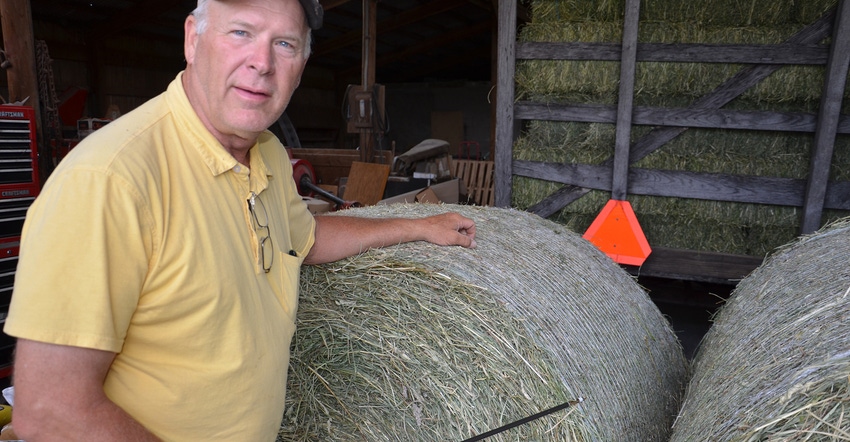
After a lifetime of baling hay, David Kleyn has a pretty good idea if it’s dry enough to bale. “After a while, you get pretty good just by feeling it,” he says. Yet Kleyn, Wanamaker, believes a hay moisture probe is worth the investment.
“After I make a big round bale, I stick in the probe just to be sure,” he says. “Moisture content is so important for hay to keep properly that I want to make sure that the moisture content is close to where I think it is just by feeling.”
A former dairyman, Kleyn has baled his share of hay. Since he no longer has cattle, he now sells his hay. He makes big round bales and some small square bales, especially of second-cutting mixed hay. He has a good demand for a quality product in small square bales.
He uses an accumulator that stacks 10 bales together coming out of the baler. Then he picks them up with a tractor and special attachment, and places them on the wagon. “That’s the only way I can still afford to bale small square bales today,” he says. “I don’t have the labor to do it any other way.”
Hay moisture testers with a digital readout are available from ag parts supply companies. A common model capable of reading moisture content in a range from 8% to 45% sells for under $300, plus shipping. It can also read temperature from 32 to 225 degrees F. A calibration clip is included for on-the-spot calibration, which only takes 20 seconds.
Check out this model at shoupparts.com/HMT2.
About the Author(s)
You May Also Like




